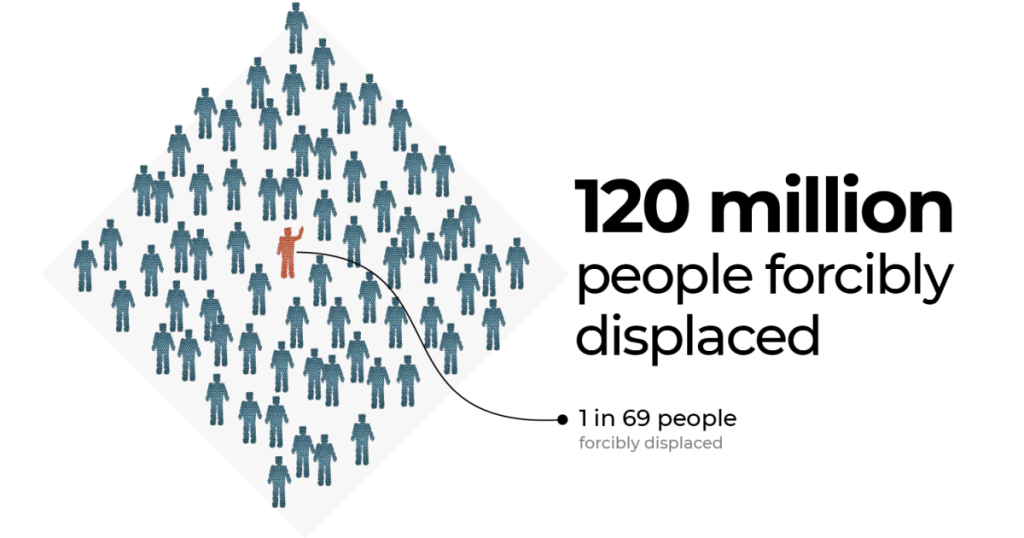The United Nations High Commissioner for Refugees (UNHCR) released a report showing that an estimated 117.3 million people worldwide are forcibly displaced, with the number expected to exceed 120 million by the end of April 2024. This displacement is a result of conflict, violence, persecution, and human rights violations. Filippo Grandi, the UN high commissioner for refugees, emphasized the urgent need for the international community to address the root causes of forced displacement to prevent further human tragedies.
Of the 117.3 million forcibly displaced, 68.3 million are internally displaced within their countries due to conflict or other crises. In Gaza, for example, more than 1.7 million people have been displaced due to Israel’s ongoing assault. The number of refugees who have crossed international borders rose by seven percent in 2023, reaching 43.4 million. This increase is driven by displacement in Sudan, ongoing conflicts in Ukraine, and other regions. Additionally, the number of asylum seekers seeking protection in another country due to persecution or fear of harm has reached 6.9 million, marking a 26 percent increase from the previous year.
The history of refugees and displaced people dates back to the UN establishing the Refugee Convention in 1951 to protect the rights of refugees in Europe after World War II. The convention was later expanded in 1967 to address displacement worldwide. The number of refugees has fluctuated over the years, with significant increases during times of conflict such as the wars in Afghanistan, Ethiopia, South Sudan, Syria, and Ukraine. Different factors, including invasions and civil wars, have contributed to the rise in refugee numbers over time.
Refugees are defined as individuals who are forced to flee their home countries to escape persecution or serious threats to their well-being. The majority of refugees come from five countries, including Afghanistan, Syria, Venezuela, Ukraine, and Palestine. Nearly three-quarters of all refugees come from these five countries, highlighting the concentrated displacement in certain regions. A significant portion of refugees seek protection in neighboring countries, with Iran, Turkey, Colombia, Germany, and Pakistan hosting the largest refugee populations.
The top refugee-hosting countries globally are Iran, Turkey, Colombia, Germany, and Pakistan. The majority of refugees in Iran and Pakistan are Afghans, while Syrians make up a significant portion of refugees in Turkey. The number of refugees has increased in major host countries over the past decade, with the exception of Turkey, where numbers have decreased. Germany stands out as a major host country that does not border main refugee source countries, with a diverse refugee population from Ukraine, Syria, Afghanistan, and Iraq.
In recent years, conflicts in various regions, including Sudan and the Gaza Strip, have led to mass displacement and humanitarian crises. The situation in the Gaza Strip is particularly dire, with a significant portion of the population displaced and facing food insecurity and the threat of famine. As displacement numbers continue to rise globally, there is an urgent need for international cooperation and action to address the root causes of forced displacement and support those affected by conflicts and crises.


